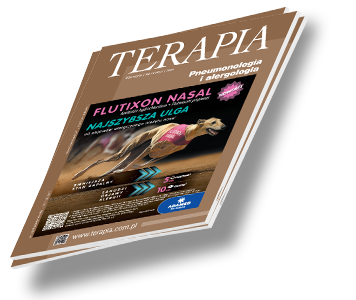Nadciśnienie tętnicze Terapia 2023, 9 ( 428 ) : 32 - 40
Miejsce antagonistów receptora AT1 w terapii nadciśnienia tętniczego – co zmieniły najnowsze wytyczne Europejskiego Towarzystwa Nadciśnienia Tętniczego (ESH 2023)?
The place of AT1 receptor antagonists in hypertension therapy - what has changed in the latest European Society of Hypertension (ESH 2023) guidelines?
Antagoniści receptora AT1, określani również sartanami, należą do pięciu głównych grup leków stosowanych w terapii nadciśnienia tętniczego (NT), które po wprowadzeniu do użycia klinicznego na początku lat 90. XX wieku mają ugruntowane miejsce w leczeniu chorób układu sercowo-naczyniowego (s-n). Na przestrzeni ponad trzech dekad w dużych badaniach klinicznych udokumentowano ich skuteczność hipotensyjną, wpływ na zmniejszanie częstości zdarzeń s-n oraz porównywalny z placebo profil tolerancji.
Sartany zajmują bardzo ważne miejsce w najnowszych – opublikowanych w 2023 roku – wytycznych Europejskiego Towarzystwa Nadciśnienia Tętniczego (European Society of Hypertension, ESH).

Zaloguj się i przeczytaj bezpłatnie całą treść artykułu.
Nie masz jeszcze konta dostępowego?
Zarejestruj się bezpłatnie, a otrzymasz:
* dostęp do wszystkich doniesień oraz pełnych tekstów artykułów naukowych w naszej Czytelni,
* prawo do bezpłatnego otrzymywania newslettera "Aktualności TERAPIA" z przeglądem interesujących i przydatnych wiadomości ze świata medycyny oraz systemu ochrony zdrowia w Polsce i na świecie,
* możliwość komentowania bieżących wydarzeń oraz udziału w ciekawych quizach i konkursach.
Zapraszamy serdecznie, dołącz do naszej społeczności.



Dodaj komentarz